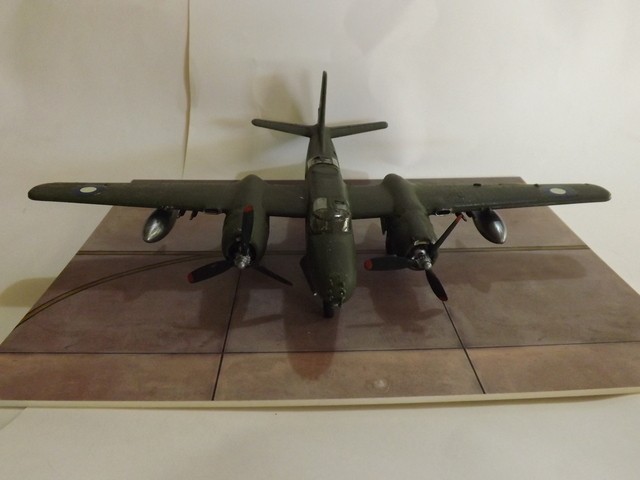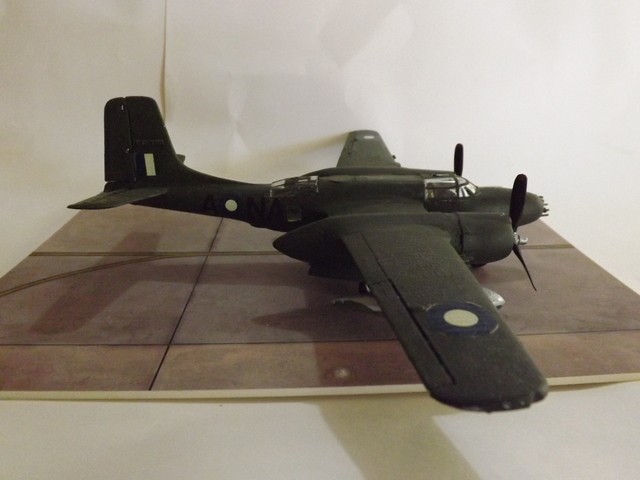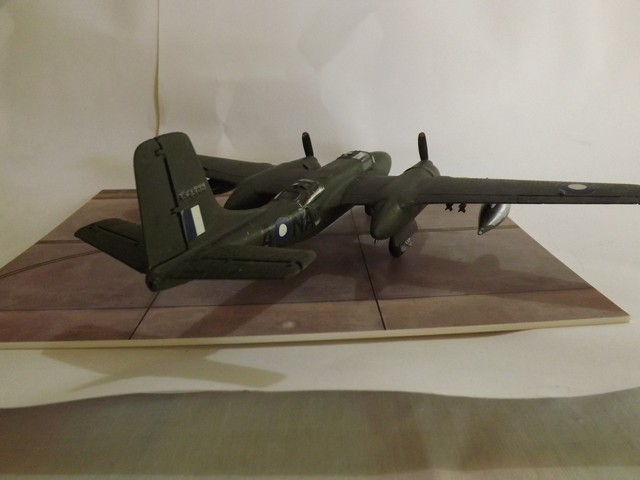A-26 Invader in RAAF serviceThe Douglas A-26 Invader (designated B-26 between 1948 and 1965) is a twin-engined light bomber and ground attack aircraft. Built by Douglas Aircraft Company during World War II, the Invader also saw service during several major Cold War conflicts. A limited number of highly modified United States Air Force aircraft served in Southeast Asia until 1969. It was a fast aircraft capable of carrying a large bomb load. A range of guns could be fitted to produce a formidable ground-attack aircraft.
A re-designation of the type from A-26 to B-26 led to confusion with the Martin B-26 Marauder, which first flew in November 1940, some 20 months before the Douglas design's maiden flight. Although both types were powered by the widely used Pratt & Whitney R-2800 Double Wasp eighteen-cylinder, double-row radial engine, they were completely different and separate designs — the Martin bomber originated in 1939, with more than twice as many Marauders (nearly 5,300) produced in comparison to the Douglas design.
USAAF serviceThe PacificThe Douglas company began delivering the production model A-26B to the United States Army Air Forces (USAAF) in August 1943 with the new bomber first seeing action with the Fifth Air Force in the Southwest Pacific theatre on 23 June 1944, when Japanese-held islands near Manokwari were attacked. The pilots in the 3rd Bomb Group's 13th Squadron, "The Grim Reapers", who received the first four A-26s for evaluation, found the view from the cockpit to be restricted by the engines and thus inadequate for low-level attack. General George Kenney, commander of the Far East Air Forces stated that, "We do not want the A-26 under any circumstances as a replacement for anything."
Until changes could be made, the 3d Bomb Group requested additional Douglas A-20 Havocs, although both types were used in composite flights. The 319th Bomb Group worked up on the A-26 in March 1945, joining the initial 3rd BG, with the 319th flying until 12 August 1945. The A-26 operations wound down in mid-August 1945 with only a few dozen missions flown. Several of the A-20 and B-25 AAF units in the Pacific received the A-26 for trials, in limited quantities.
EuropeDouglas needed better results from the Invader's second combat test, so A-26s began arriving in Europe in late September 1944 for assignment to the Ninth Air Force. The initial deployment involved 18 aircraft and crews assigned to the 553d Squadron of the 386th Bomb Group. This unit flew its first mission on 6 September 1944. No aircraft were lost on the eight test missions, and the Ninth Air Force announced that it was happy to replace all of its A-20s and B-26s with the A-26 Invader.
The first group to fully convert to the A-26B was 416th Bombardment Group with which it entered combat on 17 November, and the 409th Bombardment Group, whose A-26s became operational in late November.[16] Due to a shortage of A-26C variants, the groups flew a combined A-20/A-26 unit until deliveries of the glass-nose version caught up. Besides bombing and strafing, tactical reconnaissance and night interdiction missions were undertaken successfully. In contrast to the Pacific-based units, the A-26 was well received by pilots and crew alike, and by 1945, the 9th AF had flown 11,567 missions, dropping 18,054 tons of bombs, recording seven confirmed kills while losing 67 aircraft.
In Italy the Twelfth Air Force's 47th Bomb Group also received the A-26, starting in January 1945. They were used against German transport links, but also for direct support and interdiction against tanks and troop concentrations in the Po valley in the final campaigns in Italy.
RAAF serviceBecause of the USAAF's Pacific air force rejection, many A-26s were left in aircraft parks in Australia after being delivered. The RAAF discovered them, just at the time it was having considerable problems with the manufacture of the Mosquito. The de Havilland aircraft, made of wood faired badly before the elements in the Tropics. The glues used to bind it together started failing and aircraft were falling apart, literally rotting before their pilots' eyes. The A-26's performance was nearly as good as the Mosquito's and made of metal, did not suffer the same problems. So, late in 1944, the RAAF requested access to several Invaders for trials purposes. The RAAF's pilots were initially reluctant, after hearing the bad stories of the USAAF's experience with the aircraft in action against the Japanese. However, once they had tried it, they became enthusiastic.
The RAAF adopted the Invader as a replacement to the Mosquito. It was durable and it was fast and manoeuvrable and carried an excellent war load. Used as a night time intruder, the squadrons that adopted the aircraft found it an excellent mount.
At war's end, Australia found itself with a considerable surplus resulted from it's positive Lend-Lease ratio caused by it's supply of large quantities of grain and other agricultural products. After negotiations with the US Government it found itself heir to a large quantity of surplus US war materiale'. This included several thousand of the latest USAAF aircraft, including a large quantity of A-26 Invaders. Sufficient to keep several squadrons supplied with aircraft for some time to come.
The A-26 lasted in RAAF service until the end of the 1950s, when the last were finally retired, replaced by Canberra jet bombers. The A-26 served not only in the closing stages of the Pacific War but also in the Occupation of Japan and the Korean War. It's extended range allowed it to loiter for long periods over North Korea, interdicting the Communists' logistics effort. One was shot down in the early days of the war by a MiG-15 fighter. However, after they were switched to night time attacks only, all possible involvement with Communist fighters ended.




 The Model
The ModelThe model is the venerable 1/72 Airfix kit, hand painted in deep foliage green. It has had it's gun turrets removed to save weight and because there was little likelihood of them being much use against any intercepting fighters at night. It was brush painted and the markings are from an old ESCI Mosquito decal set, depicting a fighter from 1 Squadron RAAF.